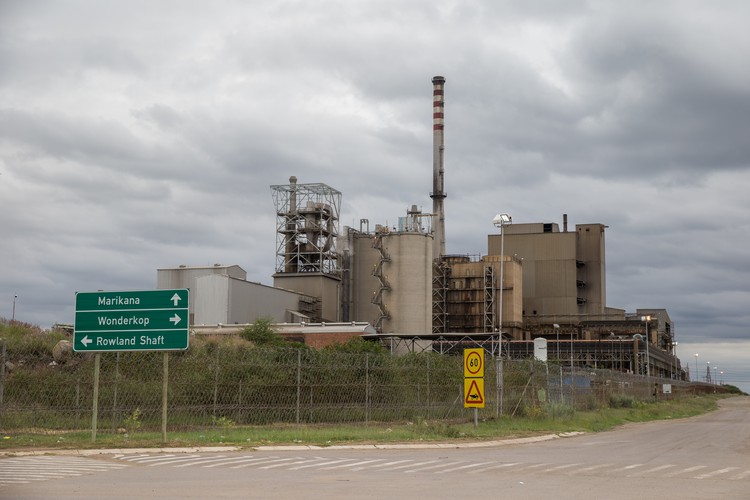

Mining companies in South Africa are legally obligated to set aside money to rehabilitate the environment when their mines cease operating. Archive photo: Ashraf Hendricks
20 June 2018
It’s currently virtually impossible to determine whether South African mining companies are fulfilling their legal obligations to repair and rehabilitate environmental damage that they cause.
As a result, shareholders, taxpayers and affected communities are unable to hold these mining companies and the official regulators accountable.
That is one of the main conclusions made by the Centre for Environmental Rights (CER) in its latest report, Full Disclosure: The truth about mining rehabilitation in South Africa, released on 20 June.
The report is part of the Full Disclosure series by the CER, an activist group of lawyers who help communities and civil society organisations give effect to their Constitutional right to a healthy environment. It is based on an analysis of data from 11 prominent mining companies listed on the JSE.
Because mining usually causes damage to the environment, it’s a legal requirement for mining companies, before they start mining, to prepare detailed studies setting out the damage that the work will cause and how they will rehabilitate it, the CER explained in a media statement about the report.
The companies are then required to determine the costs of rehabilitation and to set ring-fence sufficient funds to do the work. If a company fails to rehabilitate, the state is supposed to be able to access the fund and use it to do the rehabilitation itself.
However, neither the law nor the accounting standards governing company disclosures ensure the necessary transparency and accountability about financial provision for environmental rehabilitation, the report finds.
“The information disclosed by mining companies about the costs of rehabilitation of the environmental damage that they cause and about the money that they are obliged to set aside to fix it, is inconsistent, unclear, in some cases unreliable,” CER attorney Christine Reddell explains.
“This means that it’s impossible to check whether the estimated costs of rehabilitation given by mining companies are accurate … And whether rehabilitation is actually being carried out. In other words, it’s impossible for shareholders or taxpayers to hold companies or regulators to account.”
Because of this systemic failure, the South African landscape is “littered” with unrehabilitated mines. And even when mining companies do set aside funds for rehabilitation, it’s often almost impossible to determine whether they are actually fulfilling their legal obligations because of the government’s poor compliance monitoring and enforcement of rehabilitation obligations, the CER adds.
Reddell said the recent controversy around the apparent mismanagement of two mine rehabilitation trusts — for the Optimum and Koornfontein mines — under the control of Gupta-owned Tegeta and the Bank of Baroda, is a case in point. This was reported as another example of Gupta-related corruption. “However, the truth about mining rehabilitation in South Africa, and about the management of the funds that are supposed to be set aside to pay for it, is that it is almost impossible to ascertain whether any mining company is fulfilling its legal obligations,” said Reddell.
The problem was tested through an assessment of the financial disclosures by the 11 listed mining companies: Anglo American Platinum, Atlatsa Resources, Eastern Platinum, Exxaro, Impala Platinum, Lonmin, MC Mining (formerly CoAL), Northam Platinum, Royal Bafokeng Platinum, Wescoal and Wesizwe Platinum.
An initial assessment was done by Intellidex, a capital markets and financial services research company, and was followed by the Centre’s own engagement with the companies and further research on mining, environmental regulation, and corporate reporting.
Each company was given a ranking from 1 to 4, based on the usefulness and clarity of its public disclosures on financial provision for environmental rehabilitation.
Just two of the companies achieved the highest ranking of 1, and another two were scored at 2. Four of the companies were given a 3 rating, while three were scored at the lowest rating of 4 (view the report to see how each company fared).
Orin Tambo, senior analyst at Intellidex, said they found the disclosures by the mining companies “largely inadequate”.
“They do not provide meaningful comparative information about the costs of rehabilitation of environmental damage, and the money set aside to fund the rehabilitation when the mines cease operating,” said Tambo. “To be meaningful, disclosures should be at the level of each operation, and include detail on the types of instruments used.”
“This will enable communities affected by mining to understand exactly how much money is being set aside for mining rehabilitation, and exactly how those funds are held.”
Tambo said the lack of disclosure can be attributed to the regulatory and accounting reporting frameworks.
“Most companies interrogated in this study indicated that they would not object to disclosing or publishing more information if it became a regulatory or financial reporting requirement.
The onus, in our view, lies with the Departments of Mineral Resources (DMR) and of Environmental Affairs, and with the IFRS (International Financial Reporting Standards), to patch up the gaps in their disclosure requirements.”
The report contains a series of 10 recommendations for changes to financial reporting and disclosure by mining companies, as well to as the legal framework. These are aimed at